If you've watched Game of Thrones or read George R.R. Martin's A Song of Ice and Fire series, you'll understand that prophecy is a large part of it. It's not only about foretelling the future. It's about how humans respond to those prophecies — and how poorly things go when they mess up.
Now, Game of Thrones on HBO followed the books for a bit. But as the later seasons went on, it began to leave out or skip a great many of these prophecies. And that really changed more than you may realize. It changed how characters made choices, how the narrative felt, and even the underlying concepts behind it all.
Prophecies are difficult in the books. They're not so straightforward. They're full of mystery, double meanings, and hints that can be misinterpreted. And that is what the series is all about. George R.R. Martin employs prophecy as a way of demonstrating how dangerous it is to believe in something that you perceive as fate.
Characters in the books attempt to follow or fight against prophecies, and many times, that's what drags them down. So, it's not only about what happens. It's about how individuals cope with what they believe is going to happen.
But Game of Thrones didn't go down that road. As the television show continued on (particularly within the last seasons), it began to shed these more profound prophecy subplots. That removed some of the richer texture from the narrative.
Why is this important? The prophecies in the books do more than just promise events for the future. They link various characters, families, and story arcs across centuries and continents. They make the world seem large, old, and mysterious. Without them, the story feels slightly smaller — less mythic, more a political intrigue.
And in the books, there's that strong tug-of-war between free will and fate. Do humans control their own destinies, or are they simply acting out a play scripted ages ago? The show lost that sense of higher purpose when it allowed those concepts to slip away.
So what was left out? There are at least ten major prophecies from the books that didn't make it into Game of Thrones at all, weren't even mentioned, or were altered so severely that they lost their original significance. Each one contributes something significant to the story, to the characters, and to the larger issues.
In the next part, we’ll walk through those ten prophecies. We’ll break down what they meant in the books, why they mattered, and what was lost when they were left out of the series.
10 forgotten Game of Thrones prophecies that could have changed everything
The Valonqar prophecy
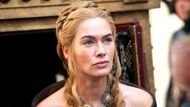
Book context:
As a child, Cersei Lannister receives a terrifying prophecy from a fortune-teller named Maggy the Frog. She's informed that she will be queen "for a time," but in the end, there will be a "younger and more beautiful" queen who will throw her down and usurp all she loves.
The most ominous part comes at the end:
“And when your tears have drowned you, the valonqar shall wrap his hands about your pale white throat and choke the life from you.”
The word valonqar means “little brother” in High Valyrian, which fuels Cersei’s lifelong paranoia, especially toward Tyrion. However, Jaime, her twin, was also born after her by minutes, making him another potential candidate.
Show treatment:
In Game of Thrones, we are given a flashback of Maggy's prophecy during Season 5, but it conveniently leaves out the "valonqar" part altogether. Everything is changed now. Without that piece of the prophecy, Cersei's fixation on Tyrion no longer has the deeper narrative reason behind it as in the books.
It also eliminates the chance of poetic justice created by the prophecy. Rather, Cersei suffocates under rubble with Jaime—a conclusion missing the thematic resolution and uncertainty that the books are trending toward.
The prince that was promised and Azor Ahai
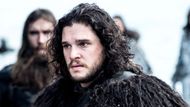
Book context:
One of the book's most enigmatic and debated prophecies is the myth of Azor Ahai, a legendary hero who will be reborn and save the world from the darkness. As foretold, this messiah will appear "amongst salt and smoke, under a bleeding star," and will possess a sword of fire by the name Lightbringer.
Possibles for the position are Stannis Baratheon, Daenerys Targaryen, and Jon Snow. Melisandre, a zealous disciple of the Lord of Light, is obsessed with finding the one true rebirth of Azor Ahai, although her interpretations change with time.
Show treatment:
Game of Thrones briefly references the prophecy through Melisandre but never explores it with the same depth or reverence found in the novels. Ultimately, Arya Stark kills the Night King, a twist that, while shocking, isn’t rooted in any of the established prophecy. The result is an anticlimactic resolution that sidelines a central mystery of the books.
By not being tied to the prophecy, the series leaves it either unfilled or too vague to be meaningful, draining the last battle of its mythic meaning.
The dragon has three heads

Book context
Daenerys is often told that "the dragon has three heads," a line repeated by her brother Rhaegar and throughout her narrative. It means three people—presumably Targaryens or at least dragonriders—are supposed to come together as one. This creates speculation among fan theories about possible dragonriders, such as Jon Snow, whose Targaryen heritage is teased through visions and secret clues. The line means Daenerys is not supposed to be alone on a dragon.
Show treatment:
In Game of Thrones, Jon does mount one of Daenerys's dragons, which is technically a reference to this prophecy. But the deeper meaning and story significance of the "three heads" thing are never teased. The concept of a set of three riders completing some ancient mission is basically abandoned. The series squanders the chance to bring together Jon's parentage, Daenerys's journey, and the legacy of the Targaryens in a manner consistent with the books' mythology.
The house of the undying visions
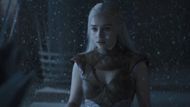
Book context:
Daenerys enters the House of the Undying in A Clash of Kings and sees a sequence of dreamlike and prophetic visions. Among these are a blue rose bursting forth from a crack in an icy wall (hinting at Jon Snow’s parentage), the Red Wedding, a wolf's head king dying, and other mysterious scenes foreshadowing critical events in the series. These visions enrich Daenerys's arc by linking her to greater mysteries and themes in the story.
Show treatment:
Game of Thrones features a condensed version of the House of the Undying in Season 2 but leaves out almost all of the significant prophetic material. Fans get symbolic imagery, such as a destroyed throne room and snow (or ash) falling, but none of the books' strong foreshadowing and interconnected imagery.
Daenerys's journey thus loses a significant portion of its prophetic richness and the larger narrative strands that connect it to the overall mythos of Westeros.
The three treasons
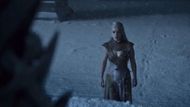
Book context:
When Daenerys visits the House of the Undying, she is informed that she will be betrayed three times: "once for blood, once for gold, and once for love." These three treasons are kept intentionally vague in the books. Some readers see Mirri Maz Duur's betrayal as "for blood" and Jorah Mormont's early spying as "for gold," but the last treason—"for" love"—has not yet occurred. The prophecy looms over Daenerys's path like a specter, repeatedly hinting that her path will be one influenced by betrayal and tragedy.
Show treatment:
Game of Thrones never overtly invokes the prophecy of the Three Treasons. Betrayals still happen—Tyrion and Varys betray her, for instance—but without the prophetic structure, they feel more like interpersonal problems than necessary elements of a greater destiny. Daenerys's fall to tyranny in the last season, therefore, comes to feel both hurried and less tragic, without the thematic payoff the books develop toward.
The stallion who mounts the world

Book context:
One of the most central prophecies in Dothraki lore states that Daenerys's unborn baby with Khal Drogo will be "the stallion who mounts the world," a messiah who will bring all the Dothraki together and rule the known world. When the baby dies, some characters and readers wonder if the prophecy would have been an incorrect interpretation or if it actually speaks not of the baby but of Daenerys herself or one of her dragons.
Show treatment:
The prophecy is set up near the beginning of the first season of Game of Thrones but forgotten immediately upon Daenerys's child's death. There is no consideration of whether the prophecy could possibly fit Daenerys or her dragons, and the possible reinterpretation of this Dothraki myth is lost. Without this plotline, much of Daenerys's arc—and her relationship to prophecy and cultural myth—hangs loose.
The Ghost of High Heart's prophecies
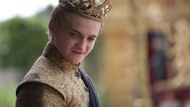
Book context:
The Ghost of High Heart is a mysterious and ancient woman who gives eerily precise prophecies to the Brotherhood Without Banners. She foresees among her visions the deaths of Joffrey and Balon Greyjoy, the Red Wedding, and cryptic clues regarding Arya Stark and Jon Snow. Her prophecies introduce a supernatural element to the narrative and support the contention that old powers and ancient magic still shape events in Westeros.
Show treatment:
Game of Thrones leaves out the Ghost of High Heart altogether. Some of her prophecies are either reused or substituted with more traditional storytelling, but the character herself—and the feeling of ancient magical foretelling she creates—is lost. Her absence erodes the feeling of prophecy and magic in the Riverlands subplot and further on.
Quaithe's warnings
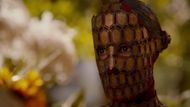
Book context:
Quaithe is an enigmatic, masked shadowbinder from Asshai who visits Daenerys in Qarth. She conveys mysterious messages that appear to foretell the future. Among her prophecies are such statements as
"To go north, you must journey south. To reach the west, you must go east. To go forward you must go back, and to touch the light you must pass beneath the shadow."
She also advises of the "pale mare," "kraken and dark flame," "lion and griffin," and the "perfumed seneschal"—symbols that fans interpret as referring to characters and events yet to come.
Show treatment:
Quaithe makes a fleeting appearance in Game of Thrones Season 2 but is not seen again. Her cryptic messages and possible status as a guide or prophet are completely stripped away. This not only simplifies Daenerys's journey but also severs ties to the larger, more esoteric world of Essos and its otherworldly magic.
The glass candles
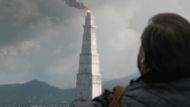
Book context:
At the Citadel, the re-lighting of the glass candles—a type of magical object—is a sign that the magic of the world is returning. Marwyn the Mage, an uncommon magician among the maesters, employs them to talk to and learn about the arcane. The candles are a quiet but potent indicator that the era of magic is awakening once again, connected to the emergence of dragons and the arrival of the Others.
Show treatment:
Neither the glass candles nor Marwyn are ever referenced in Game of Thrones. Although the return of magic is established through dragons and White Walkers, the underlying lore that the world is returning to magic because of it is never explored. This leaves audiences without a background for the larger changes taking place in the world and lessens the feeling of a world waking from sleep.
The last hero and the war for the dawn
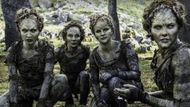
Book context:
The Last Hero is an old Westerosi tale of a man who traveled to find the Children of the Forest to battle in the first Long Night. With them, he battled to repel the darkness. His legend is one of the Night's Watch's origin myths and is very similar to the Azor Ahai legend, implying a recurring history of heroes arising to battle world-ending horrors.
Show treatment:
Game of Thrones stages the Long Night and the White Walkers, but it never addresses the myth of the Last Hero. The character development of Jon Snow might have resonated with this myth, but without mention of it, his tale is bereft of the mythic significance hinted at in the books.
In not including the Last Hero, Game of Thrones forfeits an opportunity to ground the ultimate struggle in the distant past, reducing the scale of its grandeur.
